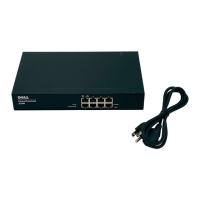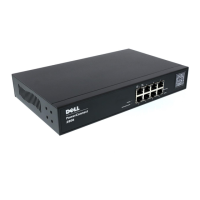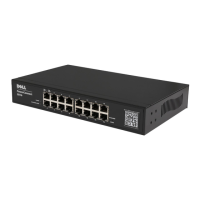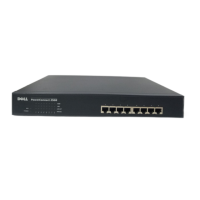2
www.dell.com | support.dell.com
Configuring Interface Parameters
The Interface Configuration screen enables the user to set the various interface parameters,
interface type and additional operational attributes. In the following example, Port 1 is configured
as 1000Mbps Copper interface type, as maximum speed and interface media type. The appropriate
cable type connection is RJ-45 1 Gigabit connection.
The Admin Status is Enabled, therefore traffic is forwarded through the port. The Current
Interface Speed is 10 Mbps as the actual synchronized interface speed. The Admin Duplex mode is
Full Duplex (FDX), supporting transmission in both directions, while the Current Duplex Mode is
configured at Half Duplex (HDX), supporting transmission between the device and the other
station in one direction only. Auto-Negotiation is Enabled, Backpressure is set at Disable, and Flow
Control is set at Disable.
Figure 9-1. Interface Configuration
VLANs
VLANs are logical subgroups within a Local Area Network (LAN) that combine user stations and
network devices into a single brodcast domain, regardless of the physical LAN segment to which
they are attached.
VLANs allow network traffic to flow more efficiently within subgroups. VLANs managed through
software reduce the amount of time network changes, additions, and moves are implemented. Port-
based VLANs are comprised of a set of ports that make up a Layer 2 broadcast domain.
The following figure illustrates the concept of VLANs in the Enterprise Network. In this example,
Finance, Marketing and R&D departments are configured as three distinct VLANs in the
enterprise, designated as VLAN #2, VLAN#3 and VLAN#4, respectively.

